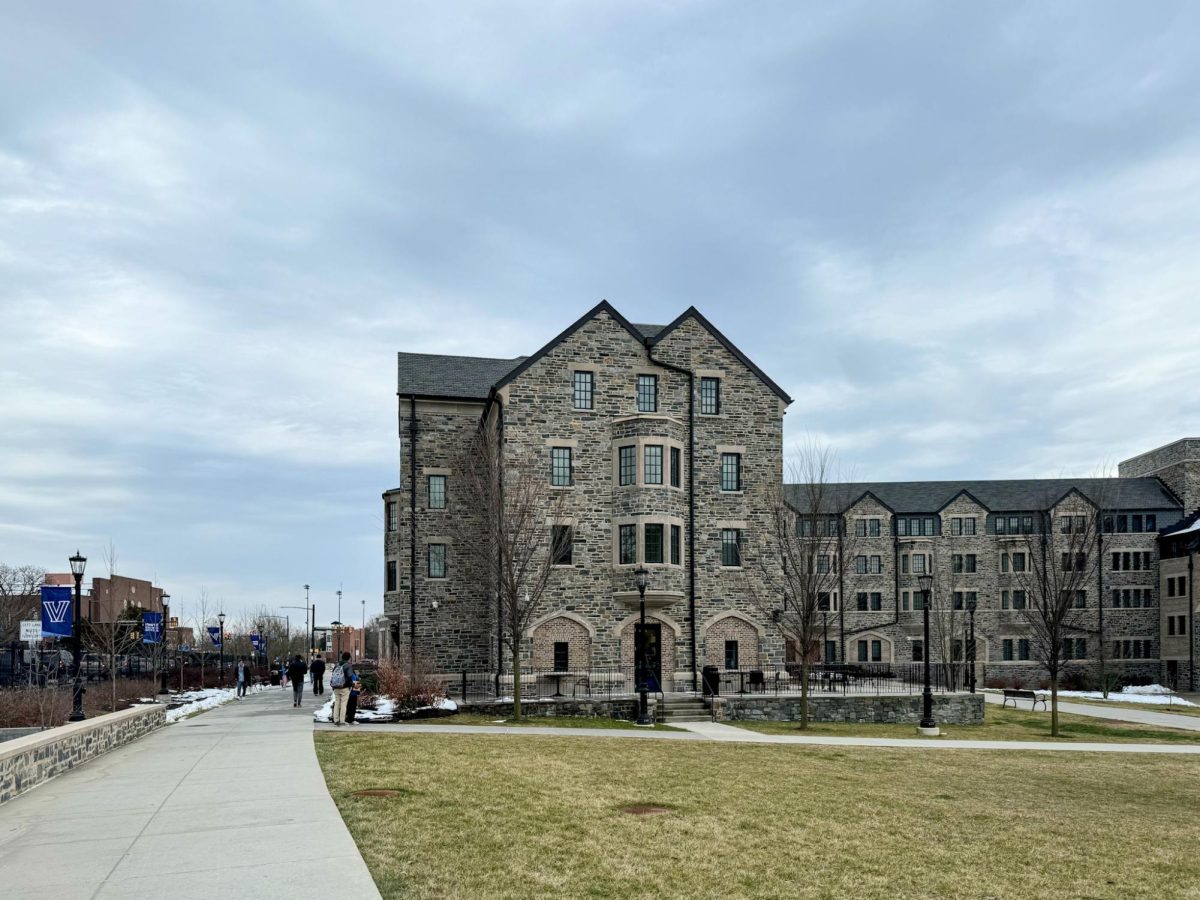In conclusion, according to the evidence provided, my hypothesis must be true.
Wait a minute. I should not be starting with the conclusion of my article, should I? That would not make any sense, right? Well, tell that to whoever designed the Villanova Commons.
It is a common conspiracy theory that the outside of the Commons was designed and built before the inside. Now, while the “7 Habits of Highly Effective People” states to “begin with the end in mind,” I do not think that they were suggesting to start by thinking only of the end and then fill in the blanks afterward.
Have you ever noticed how the exterior windows and the apartments within do not line up? Some of my friends who lived in the Commons a few years ago had two windows in their living room, one at each end, but when one looked up from the outside, the windows appeared to be far more symmetrical. It turns out that the nice, symmetric windows were actually split between rooms. In addition, there was a two-foot bump out in front of one of the windows, completely blocked by the couch. What was the purpose of this tiny bump out? It was not apparent to anyone.
Though the awkward symmetry of the windows feels like a crime, the worst part of the Commons is that Canon Hall does not come to a 90-degree angle. The two buildings both zig-zag to allow for more green space on either side, but McGuinn/Trinity/Canon’s final zag is not fully straight. One can see this on the floor plan or by observation. When walking down the halls of Canon, there is a point where the wall is simply no longer straight. Why this bizarre phenomenon is occurring is beyond me, but further serves the conspiracy theory.
The outside of the Commons must have been designed and built before the inside. How else could all of these weird things be justified?
The Commons took the place of several large parking lots and opened for residents in the Fall Semester of 2019. They were built by architecture firm Robert A.M. Stern Architects, or RAMSA, whose team designs residential, commercial and institutional buildings all over the world. According to RAMSA, the design of the exterior was vitally important to the project.
“Taking cues from Villanova’s historic architecture, the Collegiate Gothic residence halls are clad with hand-laid natural-cut granite and brick, and enriched by cast-stone details,” RAMSA’s website states. “These materials, found on buildings throughout the township, help create an impression that the residential complex has always been there – an idea that was important to University leaders.”
When reading RAMSA’s article about the construction of the Commons, the interior is hardly mentioned.
“You no longer drive past Villanova; you drive through it,” University President Rev. Peter M. Donohue, O.S.A., Ph.D. said, emphasizing the breathtaking Commons exterior.
Yes, the exterior of the Commons is striking, and the architecture certainly matches that of this historic campus. It just feels like this was overemphasized in relation to the actual functionality of the apartments, suites and singles within.
The Commons are lovely to behold and live in, but there are just some things that do not quite line up – literally, in fact. Overall, these breathtaking buildings have transformed the campus and I am lucky to call one of them home. However, in conclusion, according to the evidence provided, my hypothesis must be true: the outside of the Commons must have been designed and built with the outside before the inside.



